As the famous saying goes, not all wines are created equal. When it comes to wine, France is a powerhouse. The French are amongst the most knowledgeable wine growers in the world and they’ve been producing some of the world’s best wines for centuries.
After all, there is a reason that French wines are renowned for their quality and traditional techniques. A French classic, the wine market here is the fifth largest in the world and it’s worth around $30 billion a year, so you can imagine how good they are.
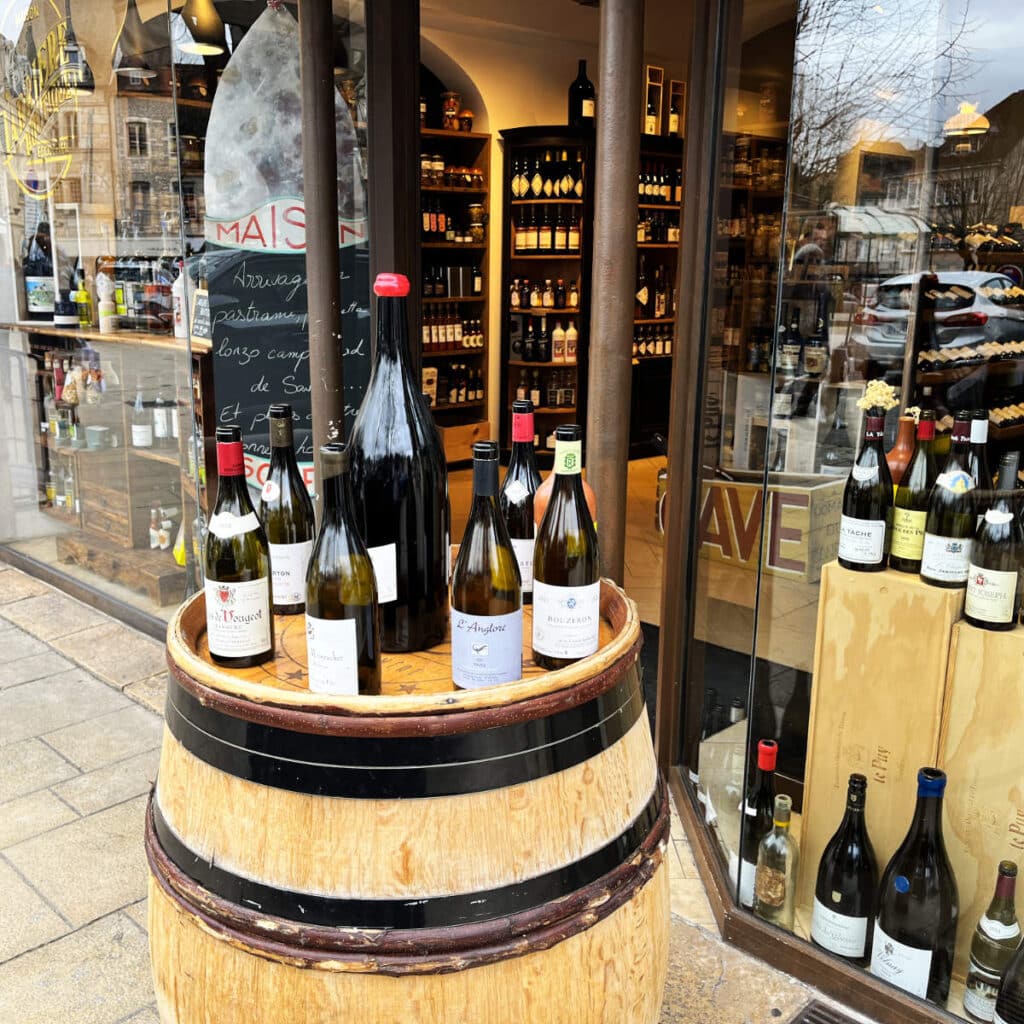
Now, while France may be renowned for its wines, there are so many different varieties and so much choice, they don’t make it easy to pick a bottle. In a country that loves complexity, the best French wines and their wine regions are no different.
The main types of wine are:
- Red wines
- White wines
- Rosés
- Sparkling wines
- Fortified wines (eg: digestifs like Cognac or Armagnac)
The most famous French wines that everyone has heard of are the Bordeaux, Burgundy, and Champagne. Yes, champagne counts as wine, of the sparkling variety.
But there are actually over 400 different types and appellations of wines, and even more wine houses producing local brands under each type of wine.
There are as many different types of wines as there are types of French cheese, which is to say a lot. Each region of France has its own “wine personality” and way of classifying what is a good wine, and what is a great one. French wines are classified and ranked by grape, soil, and acidity. The various grapes include:
- Merlot
- Grenache
- Syrah
- Chardonnay
- Cabernet sauvignon
- Cabernet Franc
- Sauvignon blanc
- Pinot Noir
- Malbec
- Gamay
- Petit Verdot
- Carignan
- Voignier
Some wines get better with age, while others do not. So in order to decide what our “own wine personality” is, let’s break down the best amongst the French wines by region, and have a look at the famous names to look out for.
- 1. Alsace
- 2. Beaujolais Wines
- 3. Bordeaux
- 4. Burgundy
- 5. Champagne
- 6. Côtes du Rhône
- 7. Languedoc-Roussillon
- 8. Loire Valley (near Paris)
- 9. Provence
- 10. Wines from South-West France
- 11. Other Vineyards
- Classification: How to pick a bottle?
- Why is French wine so expensive?
- Is French wine better than other wines?
- What is the alcohol content in French wine?
- Should you chill your bottle?
1. Alsace
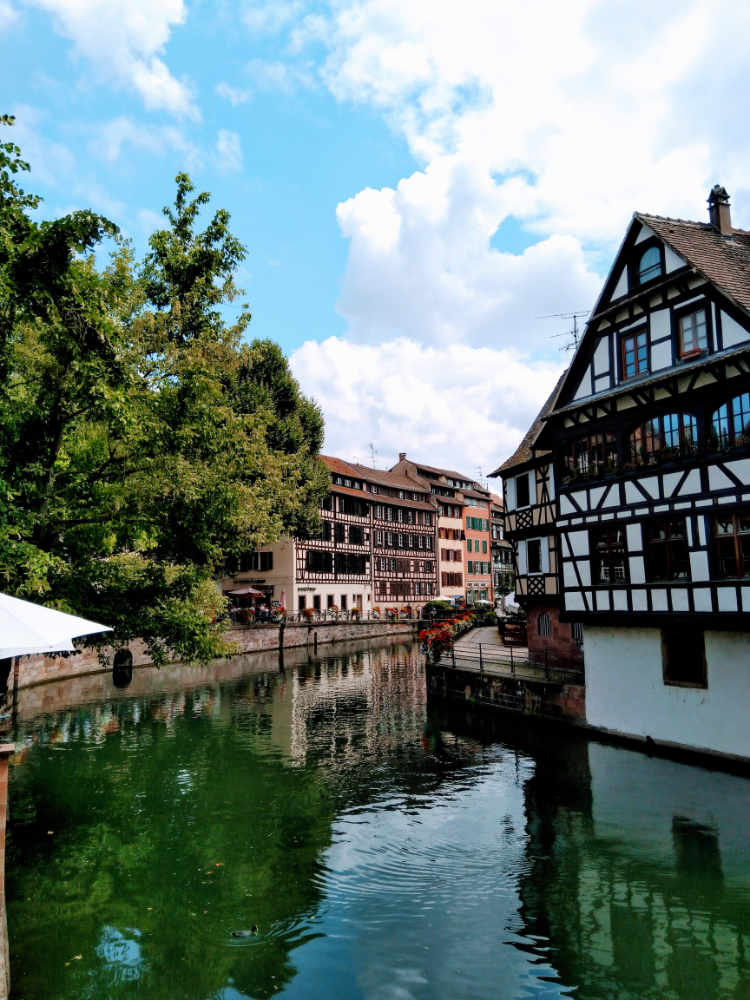
Given the history of the Alsace region, wines from this area started off being heavily influenced by their next-door neighbor German wines. Centuries of wars does not help wine production. After the end of WWII however, wine production in this part of France has taken off.
And in recent decades, Alsatian wines have diverged in tastes from German wines, becoming sweeter and drier gaining wides-spread recognition.
Most of the wines produced in this area are white wines and they tend to be named after the grapes they are made of, like Reisling, Pinot Blanc, Pinot Gris, etc.
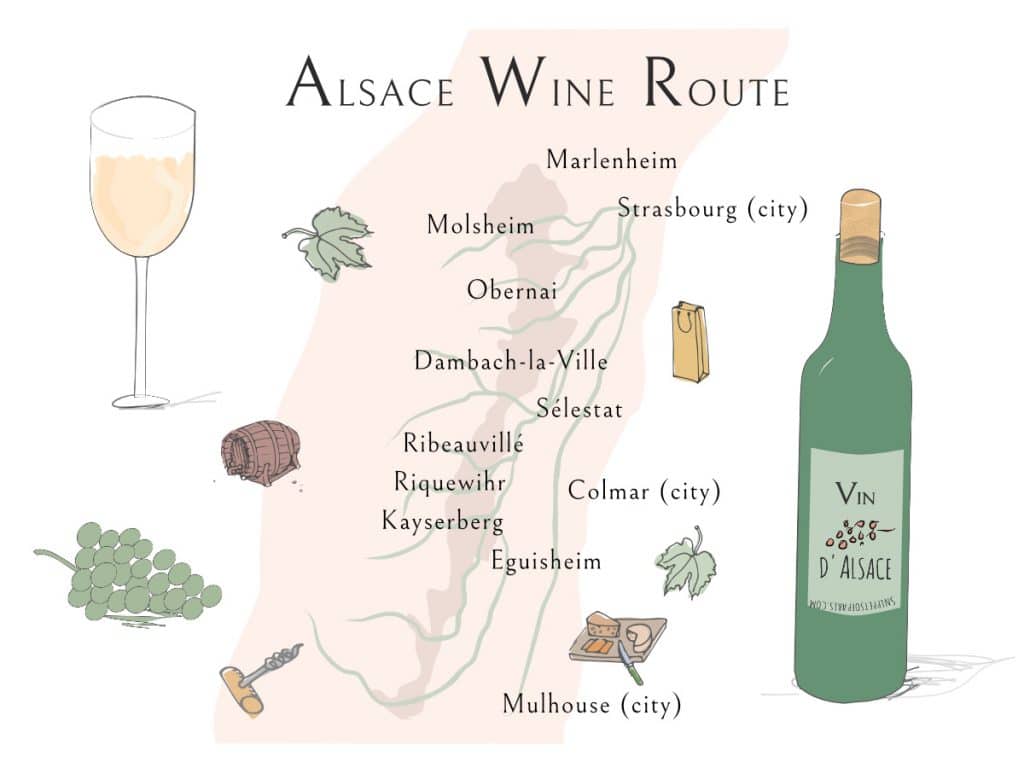
In general, the wines from this region are quite light and fruity. Wines like Reisling tend to be quite acidic, while the Gewurztraminer tends to be very sweet and served with desserts.
There is also a crémant (sparkling wine) from Alsace that is quite popular. You can read more about Alsace wines here.
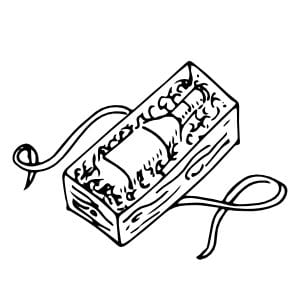
2. Beaujolais Wines
The historical province of Beaujolais, which is today part of Bourgogne (Burgundy), produces some of the most exported wines in the world. The Beaujolais is usually a light red wine made principally from Gamay grapes.
The most famous of the Beaujolais wines is, of course, the Beaujolais Nouveau. If you have been in France on the 3rd Thursday of November, you will have seen the signs announcing that the “Beaujolais Nouveau est arrivé!” (meaning “the Beaujolais Nouveau has arrived”). It is a young wine, and not always very good, but the tradition endures.
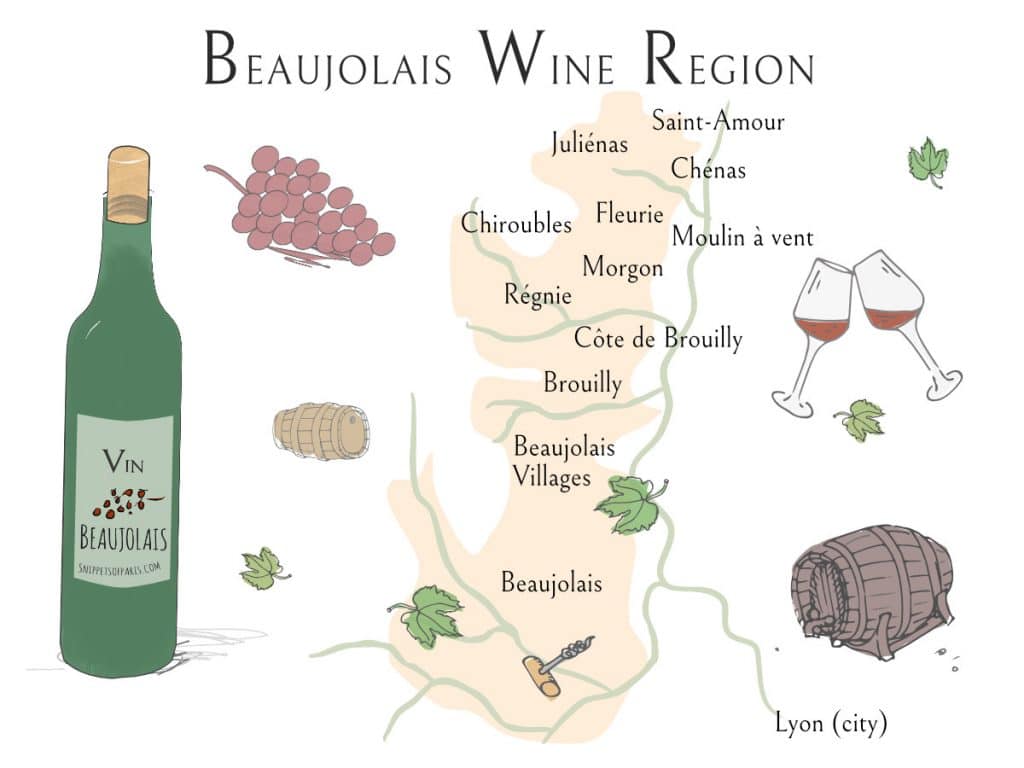
There are also 10 types of Beaujolais Cru, with Brouilly and Côte de Brouilly being the most well known. The wines have an aroma of plums, strawberries, and red currents. The wine is meant to be imbibed when it is young. It is also a wine that does well in a vin chaud recipe.
Beaujolais wines also come in rosé and blanc (white), but it is the reds that are the most popular. You can read more about Beaujolais wines here.
☞ READ MORE: 14 Amusing French Wine Quotes for a little tipple
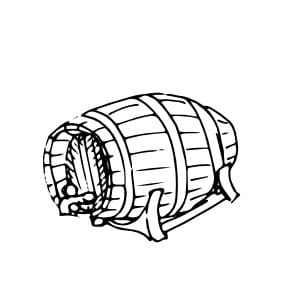
3. Bordeaux
With some of the most popular red wines in the world, Bordeaux is a wine region to be reckoned with. Located on the west coast of France, its easy access to the ocean meant that Bordeaux wines could be easily exported to England, Netherlands, and other European countries as early as the Middle Ages. When Eleanor of Aquitaine married the English king Henry II, she and her royal court brought with them their local culture of wine, as well as easy access to Bordeaux’s vineyards.
When picking a bottle of wine in Bordeaux, it is important to note that a good bottle of wine will be named after the château/domaine it is produced at, not the type of grape. This is unlike some of the other French wine regions, who name the bottle after the grape.
For example, the Cabernet Sauvignon, Merlot, and Malbec are actually grapes, after which quite a few different wines are named. This is why those wines can be produced in France, the United States, Australia, etc. and all called by the same name.
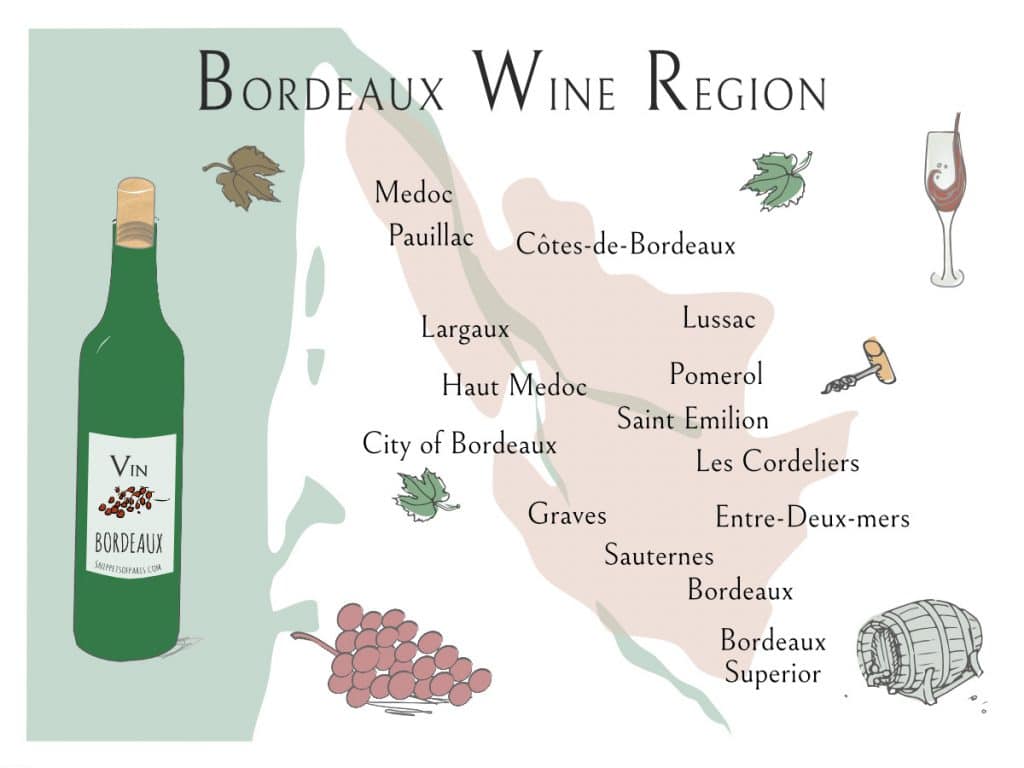
But a Bordeaux bottle of wine will have names of the area and the producer like Mèdoc, Margaux, Pauillac, Pomerol, and Saint Emilion which are all high-end red wines. These are all areas within Bordeaux with their own AOC appellations.
Pauillac and Margaux (which are both part of Mèdoc) have some of the finest grand cru wines in the world. These wines age well, and so are kept for long periods of time, greatly increasing their value. They tend to be high in tannins and have more fruity tones like cherry, currant, and blackberry.
Some of the Bordeaux Grand Crus and the most famous French wines in the world are:
| Bordeaux Wine Name | Appellation | Starting price |
|---|---|---|
| Château Lafite Rothschild | Pauillac | €1000+ |
| Château Margaux | Margaux | €800+ |
| Château Latour | Pauillac | €1000+ |
| Château Haut-Brion | Péssac-Leognan | €1200+ |
| Château Mouton Rothschild | Pauillac | €700+ |
Graves is another area with a number of AOCs for red and white wines, with nearby Sauternes making sweet wines. If you prefer sparkling wines or rosés, try Les Cordeliers. You can read more about Bordeaux wines here.
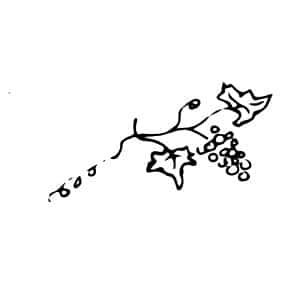
4. Burgundy
Along with Bordeaux, the other big-name in French wines is the Bourgogne (Burgundy) region. It has the highest number of AOCs in France, with no less than 37 Grand Crus. Some of the most famous names in French wines like Chablis Grand Cru, Corton, and Clos de Vougeot come from Burgundy.
Chablis (white wine) is the most famous name we tend to hear from Burgundy, and but Côte de Beaune also has an equivalent 7 white grand crus in the area. For reds, Côte de Nuits has 24 grand crus, mostly pinot noir reds that are some of the most expensive wines in the world.
Red wines from Burgundy are usually made from pinot noir grapes, while white Burgundy wines made from chardonnay grapes.
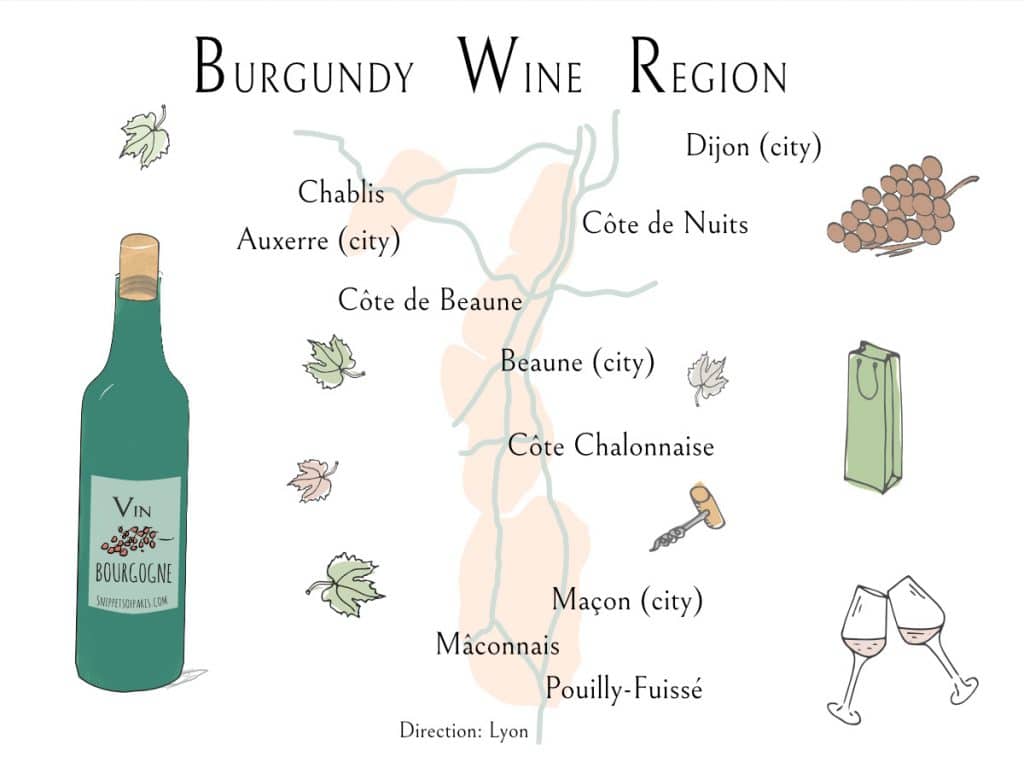
Until 2017, all Burgundy wines were AOC/AOP wines, with Vin de Pays being a new appellation for this region. There are 5 main areas in Burgundy including Chablis, Côte de Nuits, Côte de Beaune, Côte Chalonnaise and Mâcon.
Some of the best Burgundy wines are:
The Pouilly Fuissé is a type of wine from Maçon, which often gets mixed up with the Pouilly Fumé from the Loire Valley. The Pouilly Fuissé is made from the Chardonnay grape (rather than the Fumé’s Sauvignon blanc grape). You can read more about Burgundy wines here.
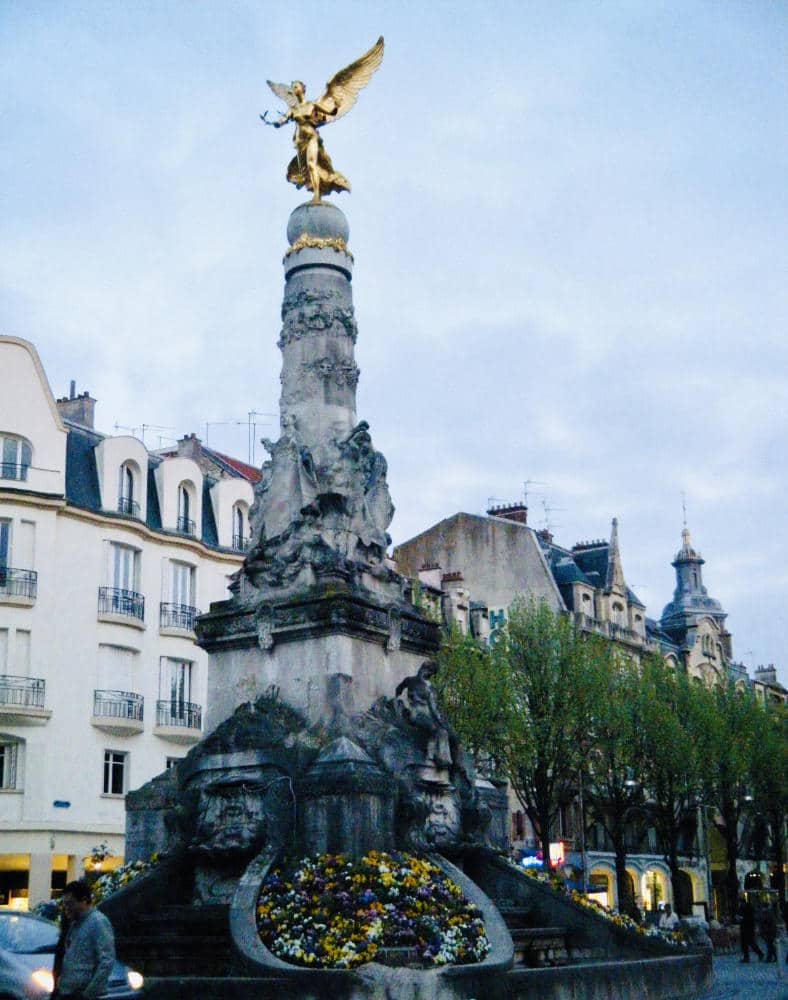
5. Champagne
Located 2-3 hours from Paris, only champagne produced in the Champagne region of France, near the city of Reims, is allowed to be called Champagne AOC. Even though it has a rather exclusive status, the production process is nonetheless similar to other French sparkling wines and crémants.
In essence, a bottle of champagne is a blend of different wines, with the fermentation occurring directly in the bottle under seal. The 8 different types and 6 different classifications of champagne that there are based on:
- location
- on soil
- climate
- grapes used
- savoir-faire of the Champagne house
The prestige of the champagne is attributed to the skill of the Cellar Master who puts the different notes together to create a scintillating blend. This is why the year of the champagne is critical since the cellar master will adjust his/her formula each year depending on the harvest, while trying to keep as close as possible to brand’s traditional savor.

Champagne Brut is the most common type of champagne (over 80%). Other types of champagne, as shown in the graphic above include:
- demi-sec
- rosé
- blanc-de-blanc
- blanc-de-noir
- sans année
- brut millesimé
- préstige cuvée
Champagne Préstige Cuvée is considered amongst the best of the best. Champagne rosé and other varieties depend on the type of grapes used and the production processes. You can read more about the different types of Champagnes here.
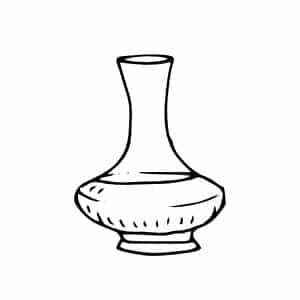
6. Côtes du Rhône
Côtes du Rhône wines have become famous because there are a lot of them, and you will likely easily find a few at your local grocery store. On either side of the Rhône river in the south of France, they usually use a majority of Grenache, Syrah, and Viognier grapes. The region stretches from Vienne in the north to Avignon in the south, with red, white, and rosé wines.
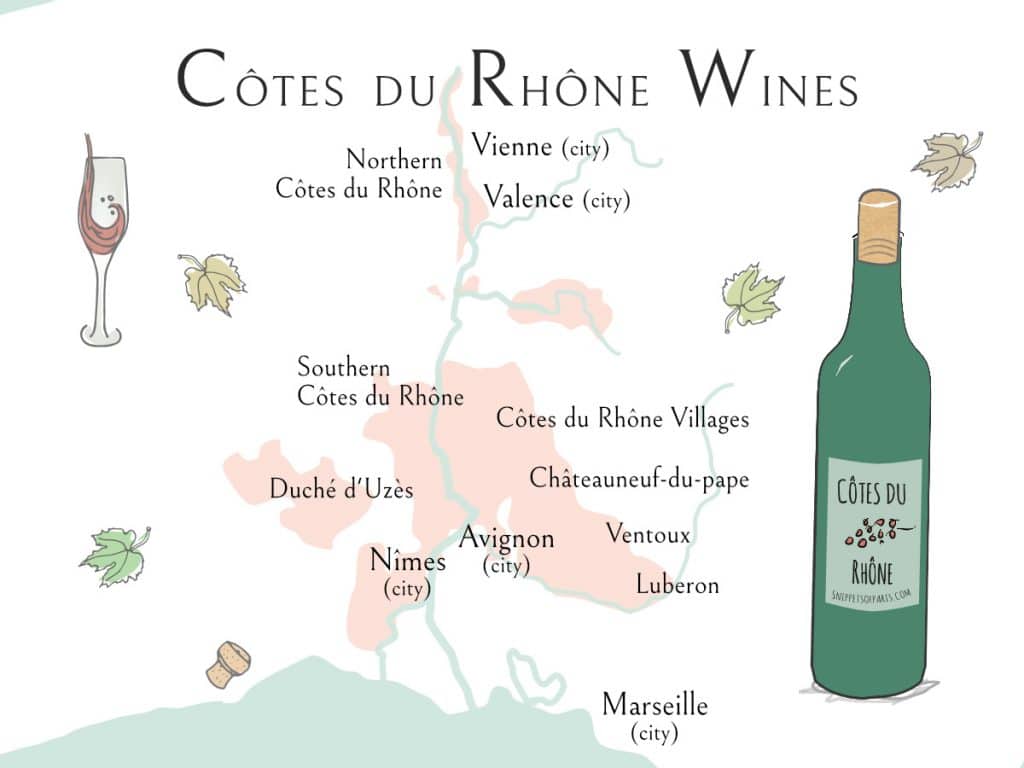
The vineyards here have existed since Roman times, using age-old techniques that have existed since then. The appellations used in this area are Côtes du Rhône, Côtes du Rhône Village, and Côtes du Rhône Cru.
A favorite in the area is the Chateauneuf du Pape wines which have strong raspberry and plummy fruit flavors. The wines were established as a name when King Philip le Bel installed the Catholic Popes in nearby Avignon, instead of in Rome.
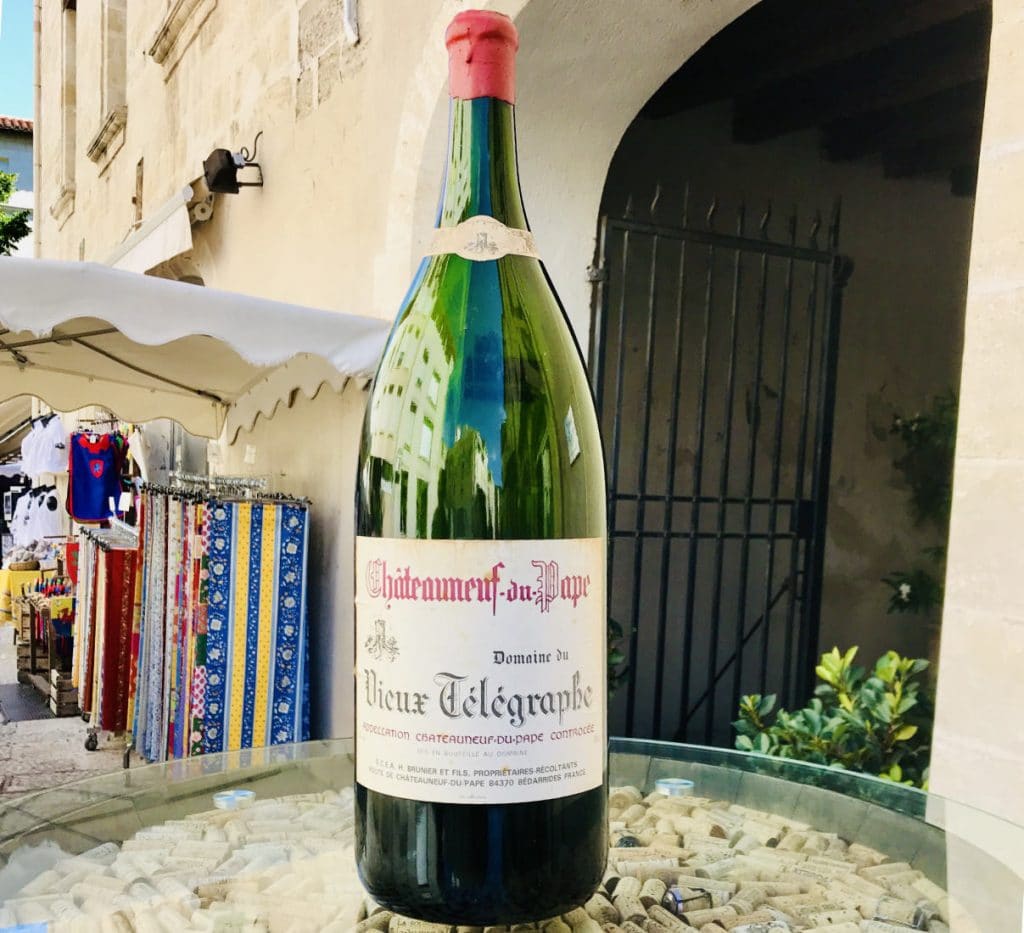
The village of Chateauneuf du Pape (meaning New house of the Pope), is about 17 km (10miles) away and was considered the Pope’s vacation residence.
In all 7 Popes stayed at Avignon, creating their own wine brand known as Chateauneuf du Pape wines. You can read more about Côtes du Rhône wines here.

7. Languedoc-Roussillon
The Languedoc-Roussillon area in the south of France (around Toulouse, Montpellier, and Carcassonne) doesn’t have a lot of wines, preferring to concentrate on quality over quantity.
It does however have the oldest wine in the world, the Blanquette-de-Limoux, which is a sparkling wine that is even older than champagne. (The story from the Limoux side is that a monk from Limoux gave the recipe to the monks from Champagne, but this has not been proven.)
Other big names in the area are the Fitou which is a red wine, and the Corbières which comes in red, white, and rosé. These are mid-range wines of decent quality (and average price tags!). You can buy a bottle of Languedoc wine here.
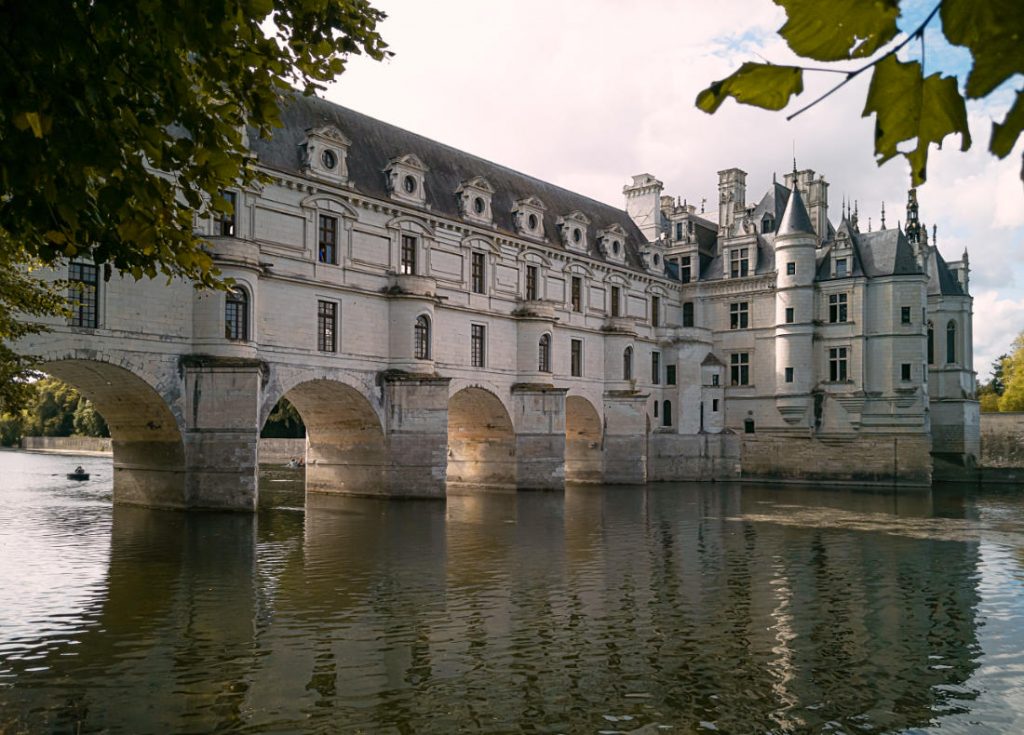
8. Loire Valley (near Paris)
The Loire valley may be more famous for its châteaux than its wines, but that is not to say there are not some very good wines in this area. In fact, it is the nearby châteaux and the allure of French royalty (as well as British royals like Anne Boyelyn and Mary Queen of Scots who spent time here) that contributed an additional sheen to wines from the Loire Valley.
Only about 2 hours from Paris, the biggest names from this area are the Sancerre and Chinon AOC, which both come in red, white, and rosé. If you are looking for day trips from Paris, a trip to a vineyard in the Loire is quite easy to arrange.
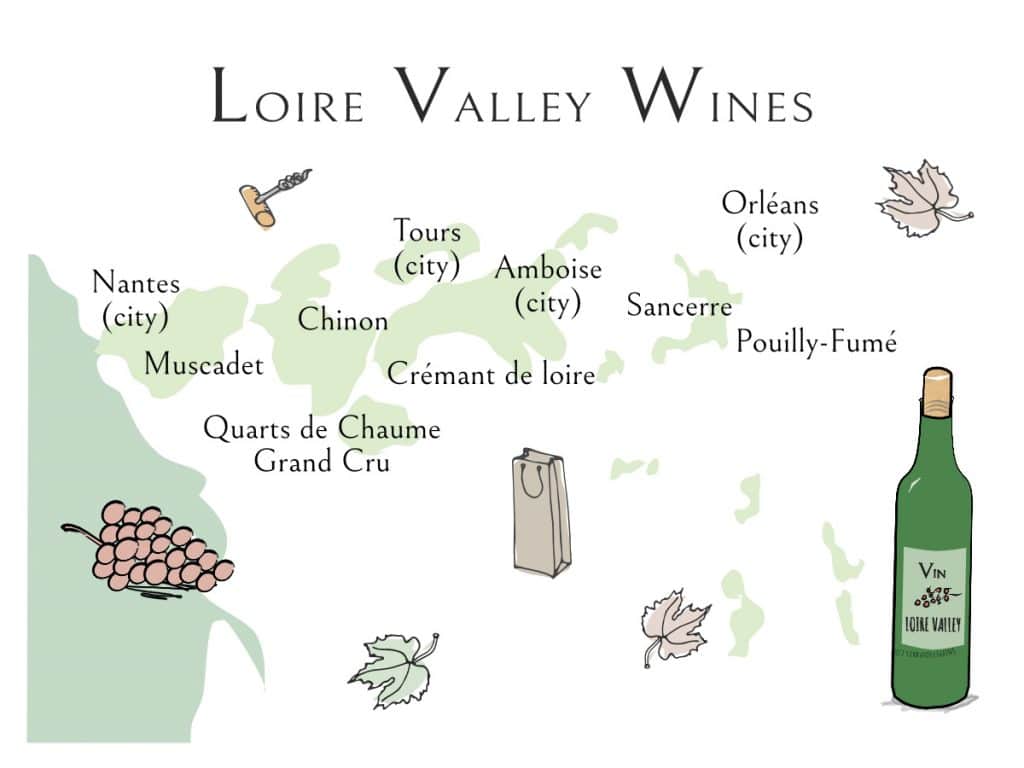
There is also the white wine Pouilly Fumé, which as mentioned above, is made from sauvignon blanc grape is often confused with Burgundy’s Pouilly Fuissé which is made from the Chardonnay grape. The Fumé has a very fresh dry taste, compared to the Fuissé’s floral nutty taste.
Other great wines from this area are the Anjou Rosé and the Muscadet blanc. You can read more about Loire Valley wines here.
9. Provence
The area around Aix-en-Provence and Marseille is quite famous for its light rosés. The biggest names in the area are Côtes de Provence and Coteaux d’Aix-en-Provence and Baux-de-Provence.
Indeed, wines from Provence come in rosé, red and white, but it is the rosés that are the most popular on a sunny hot day in Provence.
These are considered summer wines in France as French people normally only drink rosés chilled in during the warmer months. (Rosé champagnes can be drunk all year round.)
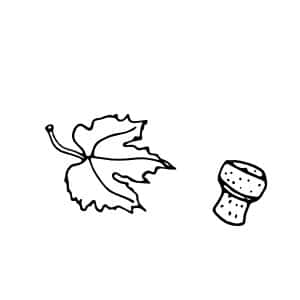
10. Wines from South-West France
Right next to Bordeaux is the tiny Sud-Ouest (South-West) wine region in France, which covers the areas around the Dordogne and Garonne rivers. The biggest names in this area are the Cahors, Bergerac, and Gaillac. These are mostly red wines, although you will find the odd rosé or white.
The grape that is common in this area is Malbec which used to be widely grown in the Burgundy area but which has recently been losing ground to the Merlot which has grown in popularity.
Malbec has a rich aromatic taste with notes of prunes, blackberries, and blueberries and is an ingredient in the Cahors AOC.
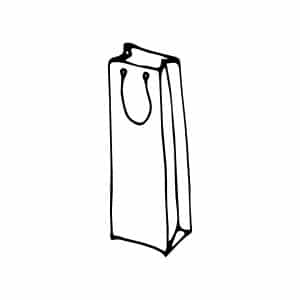
11. Other Vineyards
There are a lot of other smaller vineyards and AOCs all across France, this is the self-proclaimed capital of wine after all. Other small wine regions in France include Charentes, Corsica, Jura, and Savoie. Even the town of Paris has a small vineyard in Montmartre in the 18th arrondissement.
The white wine from Vin de Savoie AOC is a light acidic wine and is a classic in France in the cold weather months. This staple that comes from the region around the French Alps is a much-loved après-ski wine, especially when paired with cheesy traditional winter dishes like the tartiflette, fondue, ractlette, etc.
The area around Cognac, and Charentes also grow grapes to for digestifs and aperitifs like cognac, armagnac and pineau de charentes which are types of brandies and fortified wines.
Classification: How to pick a bottle?
One thing to look out for is the quality standard. A good bottle of French wine will have the following initials:
- AOC – Appellation d’Origine Contrôlée
- AOP – Appellation d’Origine Protégée
- IGP – Indication Géographique Protégée
- Vin de Table – Table wine
As you can imagine, “table wine” is not great wine, but it is drinkable. And if you are looking for a great bottle of wine, the AOC/AOP wines are further classed based on prestige with Grand cru, Premier Cru to Cinquième Cru (1st to 5th Cru), and Village wines.
Now, if you are shopping at your local grocery store, you are likely not going to find any Grand Crus there. Depending on the grocery store, you may not even find any “Village wines” in there, as if a wine is good enough to identify by its village, it is because the village is of some renown.
Most labels at your local grocery store will only be table wines or have an AOP/AOC label. For the higher-end French wines, you may have to visit a specialized wine shop. You can read more about French wines labels and how to read a label in French here.
☞ READ MORE: 17 French Social etiquette tips: Who pours the wine?
Why is French wine so expensive?
Being able to hold on to a wine that gets better with age demands a premium, which is why a good vintage increases the price. The most expensive Bordeaux wines can cost anywhere from a few thousand euros to 6-7 € figures.
But never fear, there are plenty of great French wines that are more reasonably priced, even some of those with the distinction “crus” and “grand crus” ranging from €50 on up.
Is French wine better than other wines?
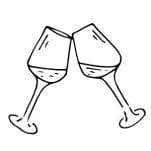
The French wine industry is highly regulated, with production techniques having been established centuries ago, and refined over the ages.
The wines are narrowly classified and ranked by grape, soil, and acidity. In France, two vineyards on the same mountain slope may have different cru classifications. It is this exigence that gives French wine its reputation for being superior to other wines.
What is the alcohol content in French wine?
The percentage of alcohol in French wines is approximately 11% for white wine, 12.5% for red wine, 12% for champagne and 14% for dessert wine. In comparison, beer is around 4-6%.
Should you chill your bottle?
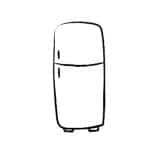
Yes, French white wines are usually served chilled, between between 48- 55 ̊ F (9-13 ̊ C).
Red wines are not usually cooled, but they are served at slightly below room temperature, as wine caves are usually underground.

I think I’m ready for a glass of wine after all that! If you enjoyed that article, you may want to read more about wine and cheese pairings here.
But remember as the French government says “The abuse of alcohol is dangerous for your health. Consume with moderation.” A bientôt!
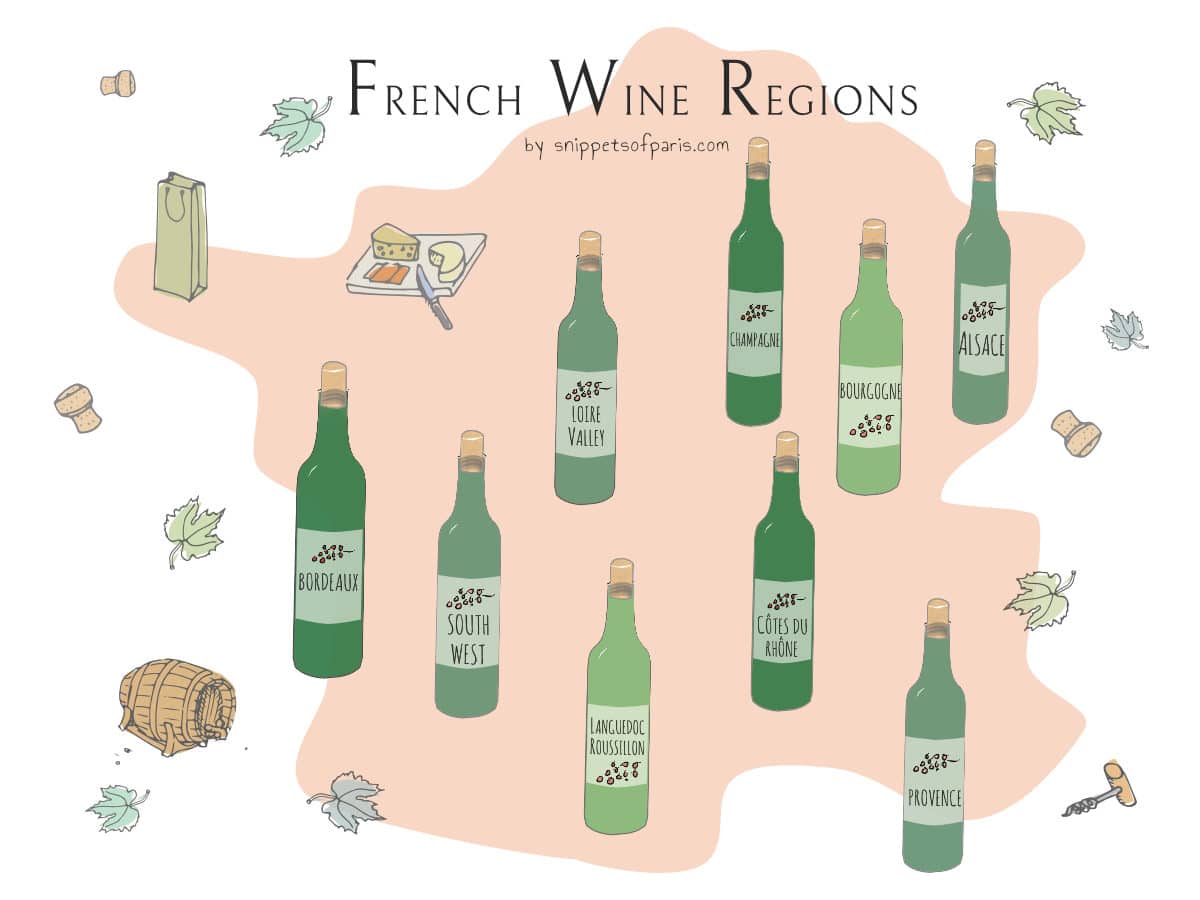
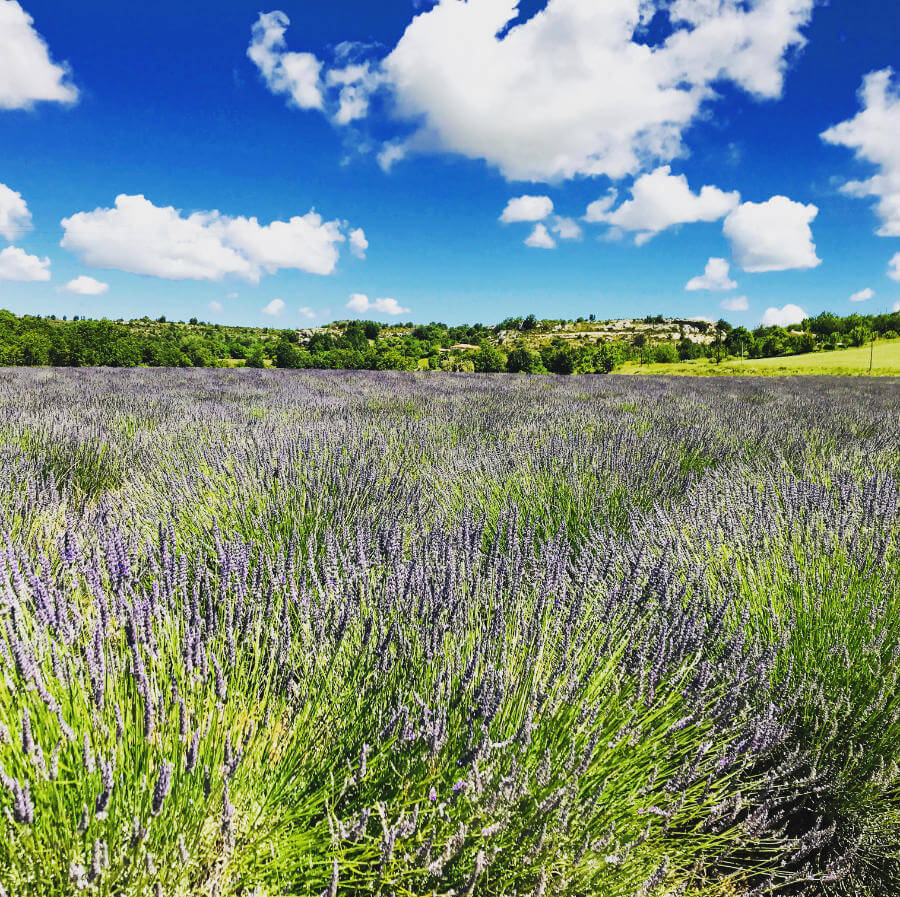
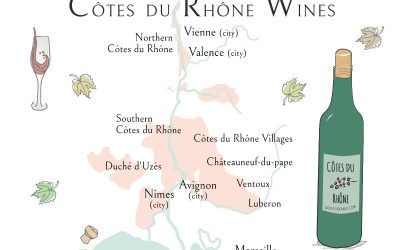
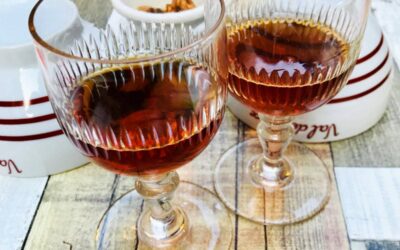
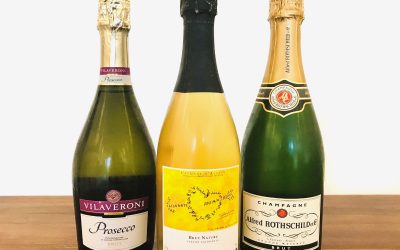
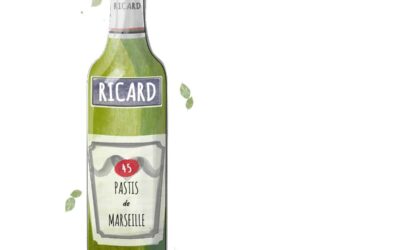
Excellent, enjoyed reading the information available. “Simple yet comprehensive”.